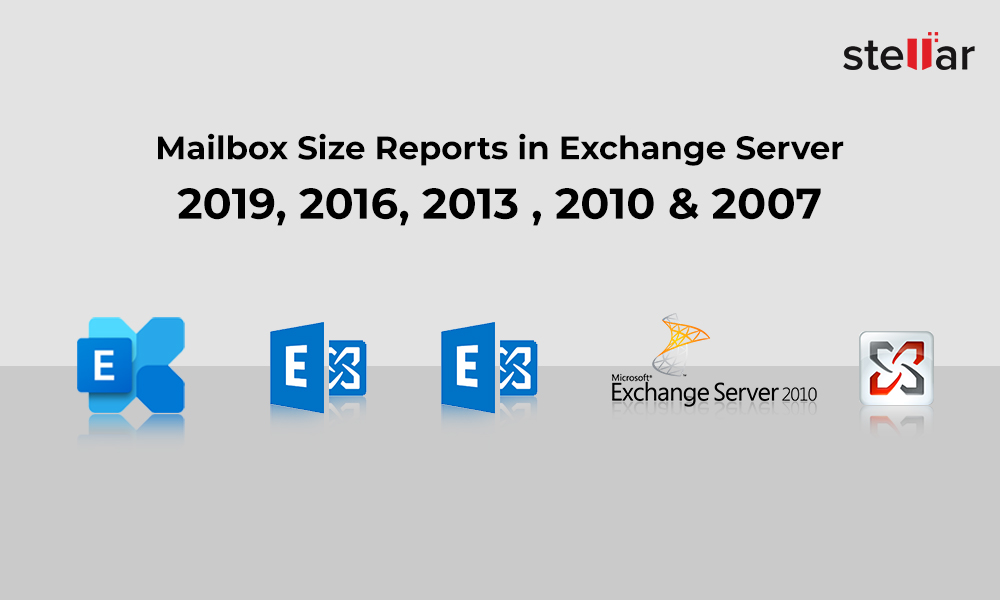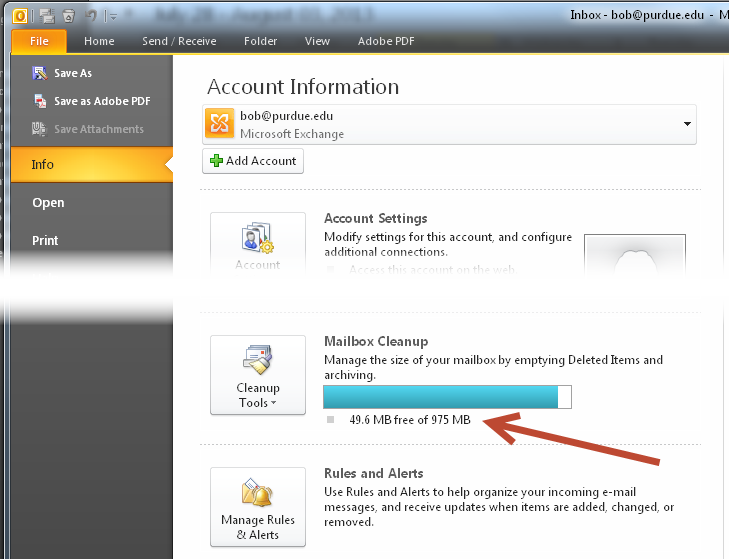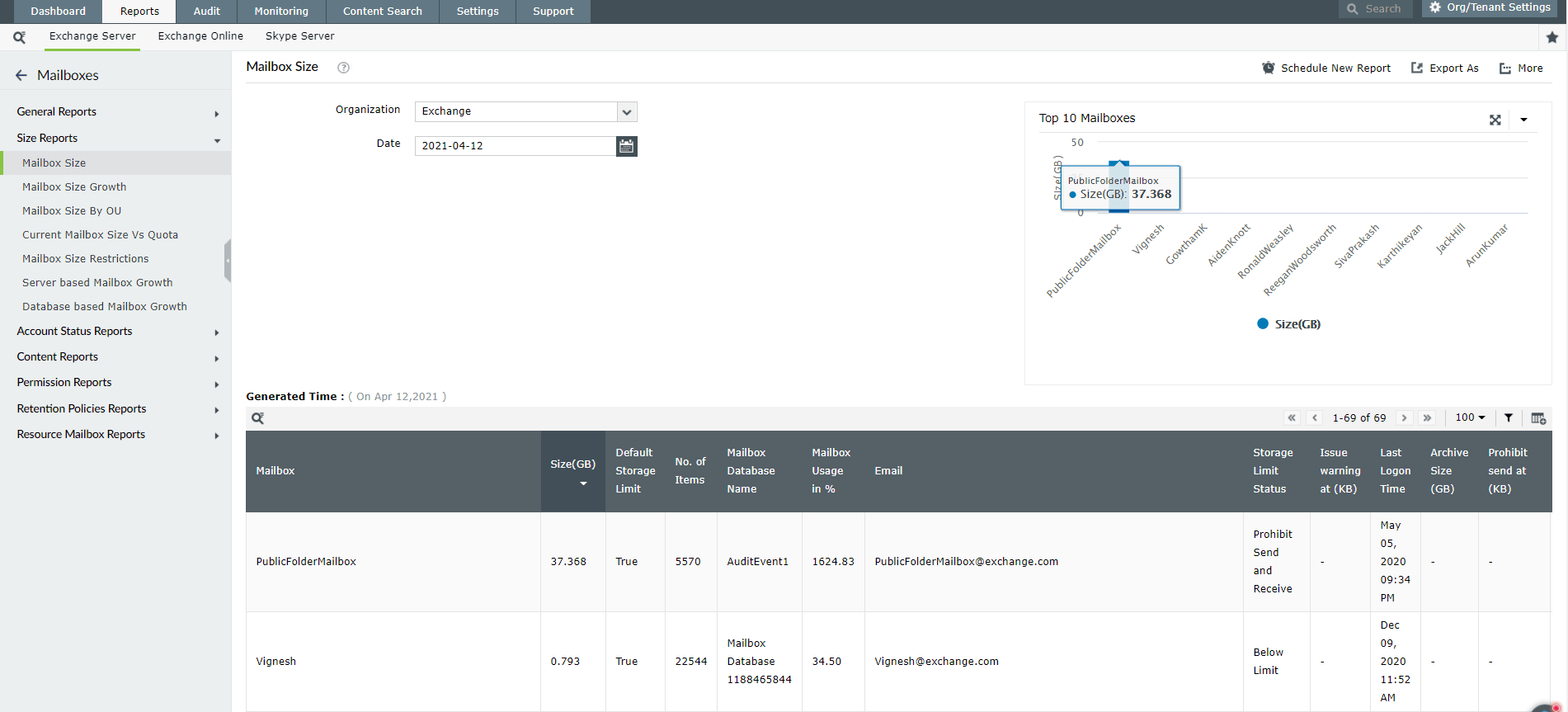

- MAILBOX SIZE EXCHANGE 2010 ARCHIVE
- MAILBOX SIZE EXCHANGE 2010 SOFTWARE
- MAILBOX SIZE EXCHANGE 2010 CODE
- MAILBOX SIZE EXCHANGE 2010 WINDOWS
MAILBOX SIZE EXCHANGE 2010 SOFTWARE
The software also allows you to schedule the reports, which you can choose to receive at a specific frequency via email. You can create the required Exchange Mailbox Size reports in just a few clicks. Unlike PowerShell, you don’t have to manually enter commands for every custom report. Stellar Reporter & Auditor for Exchange Server comes with a simple and intuitive GUI. To avoid such hassles and ease the process, you can use a third-party Exchange reporter tool such as Stellar Reporter & Auditor for Exchange Server. However, modifying the script for different requirements is a time-consuming process and it also comes with the risk of human error. For instance, you can add or remove parameters to receive the details of only select mailboxes for a specific period, and change parameters such as size limit, mailbox growth, etc. You can also customize the script to create a specific Exchange 2016 mailbox size report or Exchange 2013 mailbox size report. You can also change the system account by clicking Change User or Group.Ĭreate Mailbox Size Reports by Using Stellar Reporter & Auditorīy using PowerShell cmdlets, you can generate a wide array of mailbox reports.


'C:\Program Files\Microsoft\Exchange Server\V14\bin\RemoteExchange.ps1' Connect-ExchangeServer -auto " version 2.0 -NonInteractive -WindowStyle Hidden -command ". 'C:\Program Files\Microsoft\Exchange Server\V15\bin\RemoteExchange.ps1' Connect-ExchangeServer -auto NonInteractive -WindowStyle Hidden -command ".
MAILBOX SIZE EXCHANGE 2010 CODE
In Add arguments field, enter the appropriate code depending on the Exchange server version you are using (refer to the table below) and click Next.Enter the following in Program/script field in Start a Program section: C:\Windows\System32\WindowsPowerShell\v1.0\powershell.exe.For Action to perform, select Start a program, and click Next.Select the time to run the task, and click Next.Select the appropriate Trigger for initiating the task ( Daily, for instance) which defines the frequency of the task, and click Next.In the Create Basic Task Wizard that pops up, enter the task’s name and description (optional).
MAILBOX SIZE EXCHANGE 2010 WINDOWS
Launch Windows Task Scheduler and click Create Basic Task.You can schedule this task to run every day or every week, depending on your requirements. You can create a task with Windows Task Scheduler to automatically run the script for Exchange Mailbox size report for all users. Scheduling Exchange Mailbox Size Reports with Windows Task Scheduler

If you want to schedule a fresh and up-to-date Exchange user mailbox size report daily, you can do it with Windows Task Scheduler. This report will list all the mailboxes on the server along with their sizes, starting from the largest mailbox to the smallest mailbox. Running this script will provide you a report in CSV file format, saved as MailboxStatistics.csv. Below is a single-line script to obtain mailbox sizes. The Get-MailboxStatistics cmdlet can be used to obtain various details about a mailbox, such as the size of mailbox, number of messages it contains, etc. You can create Exchange mailbox size report by using Get-MailboxStatistics cmdlet in Exchange PowerShell console. Creating Exchange Mailbox Size Report with PowerShell In this post, we’ll discuss the ways to create and schedule mailbox size reports in Exchange server 2019, 2016, 2013, 2010, and 2007. The admins can create Exchange user mailbox size report for all users on the server to monitor mailbox storage.
MAILBOX SIZE EXCHANGE 2010 ARCHIVE
This is because some users may not keep their mailbox tidy or archive items frequently which can lead to high storage usage. For instance, they have to keep an eye on the size and quota of different mailboxes. Exchange admins have to regularly monitor the mailboxes on the server to ensure business continuity.


 0 kommentar(er)
0 kommentar(er)
